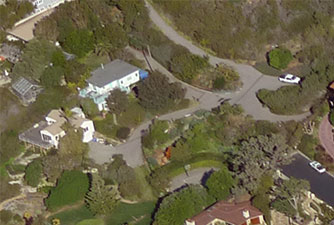- Our Story
- Publications & Resources
- Publications & Resources
- Publications
- IEEE Signal Processing Magazine
- IEEE Journal of Selected Topics in Signal Processing
- IEEE Signal Processing Letters
- IEEE Transactions on Computational Imaging
- IEEE Transactions on Image Processing
- IEEE Transactions on Information Forensics and Security
- IEEE Transactions on Multimedia
- IEEE Transactions on Signal and Information Processing over Networks
- IEEE Transactions on Signal Processing
- IEEE TCI
- IEEE TSIPN
- Data & Challenges
- Submit Manuscript
- Guidelines
- Information for Authors
- Special Issue Deadlines
- Overview Articles
- Top Accessed Articles
- SPS Newsletter
- SigPort
- SPS Resource Center
- Publications FAQ
- Blog
- News
- Dataset Papers
- Conferences & Events
- Community & Involvement
- Professional Development
- For Volunteers
- Information for Authors-OJSP
-
Home
Conferences Events IEEE Signal Processing Magazine IEEE SPL Article IEEE TIFS Article IEEE TMM Article IEEE TSP Article Jobs in Signal Processing Lectures Machine Learning Seasonal Schools Signal Processing News SPM Article SPS Distinguished Lectures SPS Newsletter Article SPS Webinar SPS Webinars SPS Webinar Series Webinar webinars
-
Our Story
What is Signal Processing?

The technology we use, and even rely on, in our everyday lives –computers, radios, video, cell phones – is enabled by signal processing. Learn More » -
Publications & Resources
-
SPS Resources
- Signal Processing Magazine The premier publication of the society.
- SPS Newsletter Monthly updates in Signal Processing
- SPS Resource Center Online library of tutorials, lectures, and presentations.
- SigPort Online repository for reports, papers, and more.
- SPS Feed The latest news, events, and more from the world of Signal Processing.
-
SPS Resources
-
Conferences & Events
-
Community & Involvement
-
Membership
- Join SPS The IEEE Signal Processing Magazine, Conference, Discounts, Awards, Collaborations, and more!
- Chapter Locator Find your local chapter and connect with fellow industry professionals, academics and students
- Women in Signal Processing Networking and engagement opportunities for women across signal processing disciplines
- Students Scholarships, conference discounts, travel grants, SP Cup, VIP Cup, 5-MICC
- Young Professionals Career development opportunities, networking
- Get Involved
-
Technical Committees
- Applied Signal Processing Systems
- Audio and Acoustic Signal Processing
- Bio Imaging and Signal Processing
- Computational Imaging
- Image Video and Multidimensional Signal Processing
- Information Forensics and Security
- Machine Learning for Signal Processing
- Multimedia Signal Processing
- Sensor Array and Multichannel
- Signal Processing for Communication and Networking
- Signal Processing Theory and Methods
- Speech and Language Processing
- Technical Working Groups
- More TC Resources
-
Membership
-
Professional Development
-
Professional Development
- Signal Processing Mentorship Academy (SigMA) Program
- Micro Mentoring Experience Program (MiME)
- Distinguished Lecturer Program
- Distinguished Lecturers
- Distinguished Lecturer Nominations
- Past Lecturers
- Distinguished Industry Speaker Program
- Distinguished Industry Speakers
- Distinguished Industry Speaker Nominations
- Industry Resources
- IEEE Training Materials
- Jobs in Signal Processing: IEEE Job Site
-
Career Resources
- SPS Education Program Educational content in signal processing and related fields.
- Distinguished Lecturer Program Chapters have access to educators and authors in the fields of Signal Processing
- Job Opportunities Signal Processing and Technical Committee specific job opportunities
- Job Submission Form Employers may submit opportunities in the area of Signal Processing.
-
Professional Development
-
For Volunteers
-
For Board & Committee Members
- Board Agenda/Minutes* Agendas, minutes and supporting documentation for Board and Committee Members
- SPS Directory* Directory of volunteers, society and division directory for Board and Committee Members.
- Membership Development Reports* Insight into the Society’s month-over-month and year-over-year growths and declines for Board and Committee Members
-
For Board & Committee Members
Popular Pages
Today's:
- Information for Authors
- Information for Authors OJSP
- IEEE Open Journal of Signal Processing
- (ICME 2026) 2026 IEEE International Conference on Multimedia and Expo
- Signal Processing Cup
- (ASRU 2025) 2025 IEEE Automatic Speech Recognition and Understanding Workshop
- Conferences & Events
- Guidelines
- SPS Scholarship Program
- Submit a Manuscript
- Access Restricted
- Publications
- Publications & Resources
- Member Highlight: Dr. Sanjit K. Mitra, Distinguished Professor Emeritus of Electrical & Computer Engineering
- Information for Authors-SPL
All time:
- Information for Authors
- Submit a Manuscript
- IEEE Transactions on Image Processing
- IEEE Transactions on Information Forensics and Security
- IEEE Transactions on Multimedia
- IEEE Transactions on Audio, Speech and Language Processing
- IEEE Signal Processing Letters
- IEEE Transactions on Signal Processing
- Conferences & Events
- IEEE Journal of Selected Topics in Signal Processing
- Information for Authors-SPL
- Conference Call for Papers
- Signal Processing 101
- IEEE Signal Processing Magazine
- Guidelines
Last viewed:
- Under the Radar Soars Above at the Vancouver Short Film Festival
- Information for Authors
- IEEE Transactions on Audio, Speech and Language Processing
- (ICME 2026) 2026 IEEE International Conference on Multimedia and Expo
- Al-Zaytoonah University of Jordan SPS Student Branch Chapter
- IEEE Transactions on Signal Processing
- Special Issue on Model-Based and Data-Driven Audio Signal Processing
- SPS SLTC/AASP Webinar: Foundational Speech Models and their Efficient Training with NVIDIA NeMo
- Information for Authors-SPL
- 2025 Asia Pacific Signal and Information Processing Association Annual Summit and Conference (APSIPA ASC)
- SPS Webinar: 19 January 2023, presented by Dr. Fei Tao and Dr. Carlos Busso
- Editorial Board
- Multimedia Prize Paper Award
- OpenAI Bot Defeated The World's Best Dota 2 Player
- ET: Edge-Enhanced Transformer for Image Splicing Detection
Recent Patents in Signal Processing (December 2017) – Active Contours
You are here
Newsletter Menu
Newsletter Categories
Top Reasons to Join SPS Today!
1. IEEE Signal Processing Magazine
2. Signal Processing Digital Library*
3. Inside Signal Processing Newsletter
4. SPS Resource Center
5. Career advancement & recognition
6. Discounts on conferences and publications
7. Professional networking
8. Communities for students, young professionals, and women
9. Volunteer opportunities
10. Coming soon! PDH/CEU credits
Click here to learn more.
News and Resources for Members of the IEEE Signal Processing Society
Recent Patents in Signal Processing (December 2017) – Active Contours
For our December 2017 issue, we cover recent patents granted in the area of applications of active contours.
Patent no 9,607,241 presents a system and method for active contour segmentation. An image of a first and at least a second structure, a first position for the first structure, and at least a second position for the at least second structure are received, the first and the at least second positions are set as a first and an at least second initial contour, and the first and the at least second initial contours are concurrently and iteratively deformed to respectively expand into a first and at least a second expanded contour matching a shape of the first and the at least second structure by applying constraints to each point of the first and the at least second initial contour, comprising a constraint for preventing the first and at least one of the at least second initial contour from intersecting one another upon being deformed, and the constraints are updated after each iteration.
The invention no. 9,495,756 introduces a system and method for active contour segmentation where an image for a structure and an initial position on the image are received, a multi-scale image representation comprising successive image levels each having associated therewith a representation of the image is computed, a representation of the image at a given level having a different image resolution than that of a representation of the image at a subsequent level, a given one of the levels at which noise in the image is removed is identified, the initial position is set as a current contour and the given level as a current level, the current contour is deformed at the current level to expand into an expanded contour matching a shape of the structure, the expanded contour is set as the current contour and the subsequent level as the current level, and the steps are repeated until the last level is reached.
In the invention no. 9,142,184 a device receives an image for an active contour model, where the active contour model includes a first module and a second module. The device receives an initial contour for the image and the active contour model, and executes a speed function of the first module, based on the image and the initial contour, to generate a speed function result. The device executes a numerical minimization method of the second module, based on the image and the speed function result, to generate a final contour, and provides the image and the final contour for display.
In patent no. 9,076,223 a device is configured to determine a contour vector that delineates an object in an image from a remaining portion of the image, and to generate a hash value by applying a hash function to the contour vector. The device is configured to compare the hash value to a previous hash value generated by applying the hash function to a previous contour vector, where the previous contour vector is determined prior to determining the contour vector. The device is configured to determine that the hash value matches the previous hash value and, based on determining that the hash value matches the previous hash value, segment the image using the contour vector.
In patent no. 8,942,441 a computer-implemented segmentation method is used to process an image representing a plurality of nuclei. The method is implemented in a computer having a processor and a physical memory. A set of instructions are provided to the processor the physical memory of the computer. The processor is configured by executing the set of instructions in the physical memory so as to automatically segment the image by: thresholding a grey-scale image to create a black and white image; identifying objects in the black and white image and removing objects failing to meet predetermined criteria; extracting objects; and applying an edge detector on the segmented image to identify the edges of the nuclei. Overlapping nuclei are split to improve results.
Patent no. 8,811,679 presents a method for realigning network elements in a digital map based on a new data set using active contour manipulation techniques. The active contour optimization process is controlled so that certain desirable features in the original shape of the active contour(s) are not distorted. In the case of network features which may be represented by two or more open active contours, the active contours are coupled prior to optimizing so that the original desirable shape, e.g., the parallel spacing of lanes in a dual carriageway road, may be maintained during the optimization process. In the case of certain closed active contours, for example roundabout geometries, a single closed active contour may be coupled to itself by linking its control points one-to-another and maintaining a proportional direction and distance movement during the optimizing process. As a result, data base networks can be assessed and aligned with less difficulty and geometric distortion.
In the patent no. 8,781,160 a method of image object tracking and segmentation is provided. The method includes defining an initial contour for tracking an image object and partitioning the initial contour into a plurality of contour segments. The method also includes estimating a weighted length of each of the plurality of contour segments and generating a desired contour by converging the plurality of contour segments to a plurality of edges of the image object using the estimated weighted length.
If you have an interesting patent to share when we next feature patents related to active contours, or if you are especially interested in a signal processing research field that you would want to be highlighted in this section, please send email to Csaba Benedek (benedek.csaba AT sztaki DOT mta DOT hu).
References
Number: 9,607,241
Title: Concurrent active contour segmentation
Inventors: Rivet-Sabourin; Geoffroy (Stoneham, CA)
Issued: March 28, 2017
Assignee: Laboratories Bodycad Inc. (Quebec, Quebec, CA)
Number: 9,495,756
Title: Multi-scale active contour segmentation
Inventors: Rivet-Sabourin; Geoffroy (Stoneham, CA)
Issued: November 15, 2016
Assignee: Laboratories Bodycad Inc. (Quebec, Quebec, CA)
Number: 9,142,184
Title: Speed function module and numerical minimization module for an active contour model
Inventors: Tiwari; Spandan (Framingham, MA), Eddins; Steven L. (Milford, MA), Mather; Jeff D. (Milford, MA), Taylor; Alexander J. (Jamaica Plain, MA), Uthama; Ashish (Arlington, MA), Yale; Mara M. (Framingham, MA)
Issued: September 22, 2015
Assignee: The MathWorks, Inc. (Natick, MA)
Number: 9,076,223
Title: Fast stopping criterion for active contour algorithms
Inventors: Tiwari; Spandan (Framingham, MA), Eddins; Steven L. (Milford, MA)
Issued: July 7, 2015
Assignee: The MathWorks, Inc. (Natick, MA)
Number: 8,942,441
Title: Optimizing the initialization and convergence of active contours for segmentation of cell nuclei in histological sections
Inventors: Nielsen; Birgitte (Oslo, NO), Maddison; John (Sussex, GB), Danielsen; Havard (Oslo, NO)
Issued: January 27, 2015
Assignee: Institute for Medical Informatics (Oslo, NO)
Number: 8,811,679
Title: Digital map editing process using active contour manipulation
Inventors: Bekaert; Tim (Heule, BE), Clarysse; Pascal (Koksijde, BE)
Issued: August 19, 2014
Assignee: TomTom Belgium N.V. (Gent, BE)
Number: 8,781,160
Title: Image object tracking and segmentation using active contours
Inventors: Viswanathan; Srikrishnan (Mumbai, IN), Chaudhuri; Subhasis (Mumbai, IN)
Issued: July 15, 2014
Assignee: Indian Institute of Technology Bombay (Powai, Mumbai, IN)
Open Calls
| Nomination/Position | Deadline |
|---|---|
| Call for proposals: 2027 IEEE Conference on Artificial Intelligence (CAI) | 1 October 2025 |
| Meet the 2025 Candidates: IEEE President-Elect | 1 October 2025 |
| Take Part in the 2025 Low-Resource Audio Codec (LRAC) Challenge | 1 October 2025 |
| Call for Nominations for the SPS Chapter of the Year Award | 15 October 2025 |
| Call for Papers for 2026 LRAC Workshop | 22 October 2025 |
| Submit a Proposal for ICASSP 2030 | 31 October 2025 |
| Call for Project Proposals: IEEE SPS SigMA Program - Signal Processing Mentorship Academy | 2 November 2025 |
Society News
- Nominate an IEEE Fellow today!
- Santa Clara Valley Chapter & Vancouver Chapter Receive the 2017 Chapter of the Year Award!
- Oracle iSupplier for IEEE US Volunteers Expense Reimbursements
- Women in Signal Processing Directory
- Upcoming Distinguished Lectures
- Job Opportunities in Signal Processing
- 2017 Member-Driven Initiative
Education & Resources
Technical Committee News
- What Should We Learn from IARPA’s Deep-Learning Challenge Seeks AI to Analyze Satellite Images
- Get Involved with Technical Committees via the Affiliate TC Membership
- Signal Processing in Action: Georgia Tech Professor David Citrin is Revealing the Secrets of 17th Century Artists, thanks to 21st Century Signal Processing
- Signal Processing in Action: An Old Technique Could Put Artificial Intelligence in Your Hearing Aid
- Humanoid Robot Can Backflip
Publications News
Conferences & Events
SPS Social Media
- IEEE SPS Facebook Page https://www.facebook.com/ieeeSPS
- IEEE SPS X Page https://x.com/IEEEsps
- IEEE SPS Instagram Page https://www.instagram.com/ieeesps/?hl=en
- IEEE SPS LinkedIn Page https://www.linkedin.com/company/ieeesps/
- IEEE SPS YouTube Channel https://www.youtube.com/ieeeSPS
Home | Sitemap | Contact | Accessibility | Nondiscrimination Policy | IEEE Ethics Reporting | IEEE Privacy Policy | Terms | Feedback
© Copyright 2025 IEEE - All rights reserved. Use of this website signifies your agreement to the IEEE Terms and Conditions.
A public charity, IEEE is the world's largest technical professional organization dedicated to advancing technology for the benefit of humanity.









